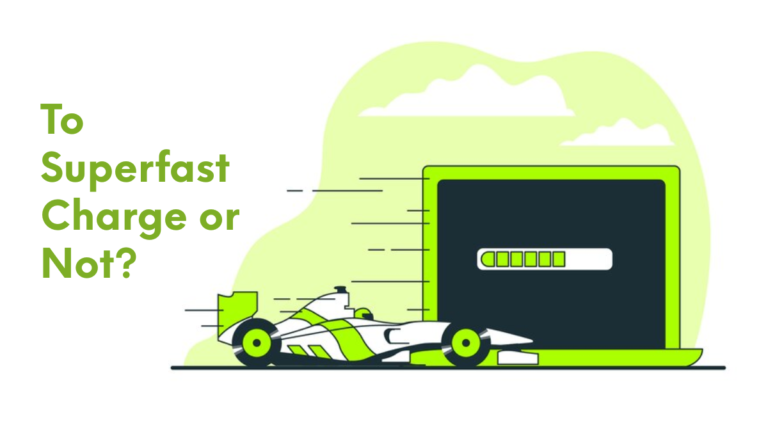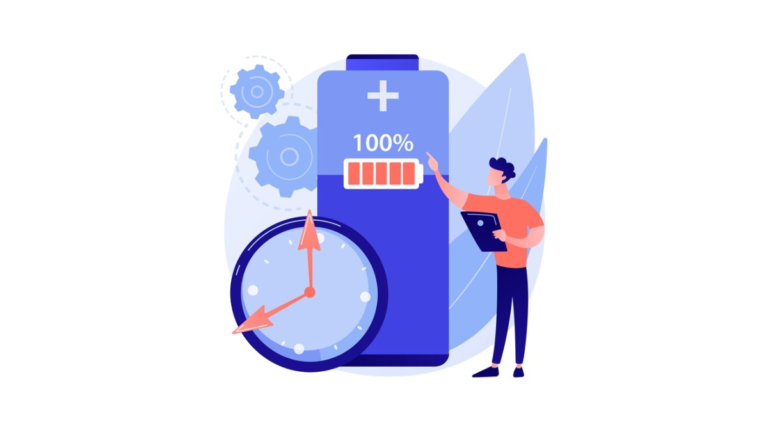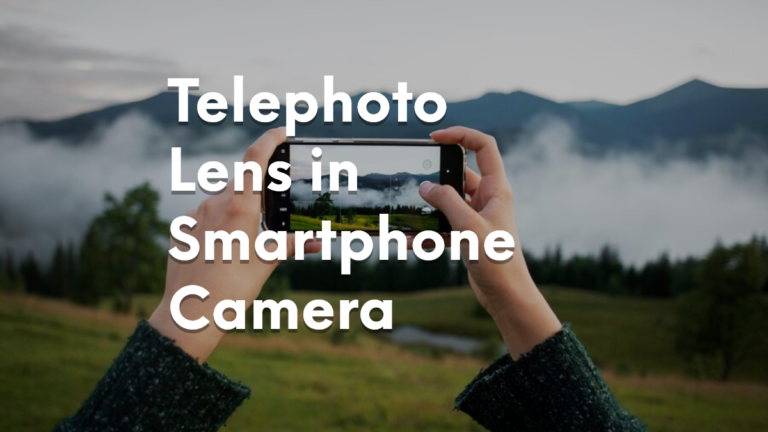How does a fast charger work in android smartphones? To answer this, first understand this – smartphone batteries usually last 2 to 3 years. After that they lose about 20% of their original power and then keep on degrading.
Fast charging has become an essential feature for most modern Android smartphones. With people relying more and more on their phones, being able to charge them quickly has become a necessity. To get the most out of your phone’s battery, it’s important for you to know how your fast charger work.
In this blog post, we’ll take a look at the technology behind fast chargers and how they’re able to charge your Android smartphone so quickly.
How Does a Fast Charger Work In Android Smartphones?
Fast chargers for Android smartphones rely on two key technologies – Power Delivery and Qualcomm’s Quick Charge.
Power Delivery (PD) is an open standard that enables power adapters to provide higher voltage and current for faster charging speeds. PD chargers can supply up to 100 watts of power, allowing compatible Android phones to charge extremely quickly.
Many modern Android smartphones like the Samsung Galaxy and Google Pixel series support the PD standard.
Qualcomm’s Quick Charge, on the other hand, is a proprietary fast charging standard found in Qualcomm’s Snapdragon chipsets. Fast chargers using Quick Charge communicate with the phone to provide varying voltages and currents based on what the battery needs.
This allows the battery to charge rapidly while staying cool and safe. The latest Quick Charge 5.0 version claims to charge phones up to 70% in just 5 minutes. Popular phones like the OnePlus, Asus and Xiaomi models often use Qualcomm chipsets and support their Quick Charge technology.
In both cases, fast chargers are able to push more power into the phone’s battery thanks to higher voltages and currents. This allows the battery to charge much faster compared to regular 5W or 10W chargers. The phone and charger communicate to regulate the power flow and optimize charging speed while maintaining safety.
What is the downside of using fast chargers in Android Smartphones?
Despite the conveniences, fast charging does come with a few downsides:
- Increased heat – Fast chargers supply a lot more power and generate more heat while charging. Excessive heat can degrade the battery over time.
- Faster battery wear – Charging at higher speeds puts more strain on the battery and causes faster deterioration of the cells. This shortens the battery’s lifespan.
- Safety risks – Poorly made fast chargers may lack the necessary circuitry to regulate power flow safely. They increase the risk of overheating, component damage or even explosions.
- Incompatibility – Fast charging standards don’t always match between phones and chargers. An incompatible fast charger may not deliver full charging speeds or even damage the device.
- Higher energy consumption – Fast chargers draw significantly more power to provide the boosted charging speed. Frequent fast charging will consume more electricity.
To mitigate these downsides, it’s recommended to avoid excessive fast charging, use OEM chargers, and replace batteries after significant deterioration is noticed. Moderation is key to getting the benefits of fast charging while minimizing battery wear.
Fast Charger vs Regular Charger
Now that you (sort of) know the answer to ‘how does a fast charger work?’, let’s now look at the other part of it – fast charger vs a regular charger.
So how exactly does a fast charger differ from a regular charger? Here are some key differences:
- Power Output: Fast chargers provide higher power output, often 18-30W compared to just 5-10W on regular chargers. Quick Charge and USB PD fast chargers can output up to 100W.
- Charging Speed: Fast chargers can charge a 3000 mAh phone battery from 0 to 50% in 30-40 minutes, while regular chargers take over 2 hours. The highest charging speeds can reach 70% in just 5-10 minutes.
- Technology: Fast chargers use advanced technologies like Quick Charge, USB Power Delivery, VOOC, and SuperVOOC. Regular chargers just have standard USB.
- Voltage: Fast chargers supply higher voltages up to 20V compared to just 5V on regular chargers for increased power.
- Charging Method: Fast chargers use constant-current and constant-voltage charging to optimize charging speed and safety. Regular chargers have slower constant-current charging.
- Size and Design: Fast chargers have a larger design with better heat dissipation given the higher power. Many also have a USB-C connector.
Different Types of Fast Chargers in Android
While standards like Quick Charge and USB PD are more widely compatible, many phone brands also have their own proprietary fast charging technologies to differentiate their devices.
There are a few main fast charging standards used across various Android smartphones:
- Qualcomm Quick Charge – Fast charging standard from Qualcomm supporting versions from Quick Charge 1.0 up to the latest 5.0. Used in phones with Snapdragon chipsets.
- USB Power Delivery – Open standard that can deliver up to 100W power for ultra-fast charging. Supported on many newer Android phones.
- OPPO SuperVOOC – Proprietary fast charging standard from OPPO that offers 50W charging power. Used in OPPO, OnePlus and Realme phones.
- Huawei SuperCharge – Huawei’s own fast charging solution that delivers 55W power output for phones like the P30 Pro and Mate 30 Pro.
- Xiaomi HyperCharge – Xiaomi’s 120W fast charging technology that can charge a 4000 mAh battery in just 15 minutes. Not yet commercially available.
- Samsung Adaptive Fast Charging – Samsung’s earlier fast charging standard was supplying up to 15W power. Superseded by USB PD support on Galaxy smartphones.
- Motorola TurboPower – Fast charging support on Motorola phones providing up to 45W charging power.
Will Fast Charging Damage Your Smartphone Battery?
This is a common concern that arises with fast charging – can it degrade the phone’s battery more quickly? The answer is yes, fast charging does put more strain on the battery which can impact its lifespan. However, the effect depends on various factors.
Some ways fast charging impacts the battery life are:
- More heat buildup – Fast charging leads to more heat generation during the process. Excessive heat causes faster degradation of battery cells.
- Increased charge cycles – Fast charging allows you to charge your phone more times a day. More charge cycles mean faster aging of the battery.
- Higher voltage/current – Fast chargers pump more power into the battery. This added stress can cause more wear and tear.
However, measures like battery chemistry improvements, smartphone power management chips, and charging limitations by phone manufacturers help mitigate battery wear due to fast charging.
Moderation is key – don’t fast charge more than necessary, use the original charger, replace older batteries. With prudent use, fast charging doesn’t necessarily spell doom for your phone’s battery life.
The convenience often outweighs the risks of marginal battery wear for most users. Just be mindful of not overdoing it.
What If You Use A Fast Charger On A Regular Smartphone
Many people mistakenly use fast chargers with their older non-fast-charge phones. So what implications does this have?
When you use a fast charger on a regular phone, there are a few possible outcomes:
- Charging speed will remain normal – The phone isn’t designed for fast charging and will simply draw normal charging power and ignore the extra capability of the charger.
- Circuitry prevents fast charging – Many phones have power regulation chips that will prevent excessively high charging currents that may damage the phone.
- Charging stops due to incompatibility – If the fast charging protocol is incompatible, charging may simply not work at all between the charger and non-fast charge phone.
- Minor improvement in charging time – In rare cases, charging time may improve slightly if the phone’s circuitry permits slightly higher power from the fast charger while remaining within safe limits.
- Potential damage if unregulated – Lack of proper regulation can result in excess current/voltage damaging the phone’s battery or charging components. But such scenarios are very unlikely with most modern phones.
While you’re at it, check the top 20 reasons why your smartphone might be charging slow. [Using incompatible chargers is the #3rd reason.]
Conclusion
In closing, here are some key takeaways that briefly answer the question – how does a fast charger work on Android phones:
- Fast chargers use advanced technologies like Quick Charge and USB Power Delivery to provide high-power charging. This allows much faster charging speeds compared to regular chargers.
- However, the increased heat and strain on batteries causes faster battery deterioration over time. Moderation is important to maximize battery lifespan.
- Use only certified fast chargers compatible with your specific phone. Incompatible or low-quality fast chargers can risk damage due to improper power regulation.
- While convenient, avoid excessive fast charging to limit battery wear. Charge up to 80% for daily needs, and minimize leaving phones plugged in overnight.
- Replace aging phone batteries that show significantly decreased lifespans to restore normal charging speeds and battery runtime.
With wise use, you can enjoy the convenience of fast charging your Android smartphone while keeping your phone’s battery in good shape. Just be mindful of moderation and using the right certified charger for your device.






